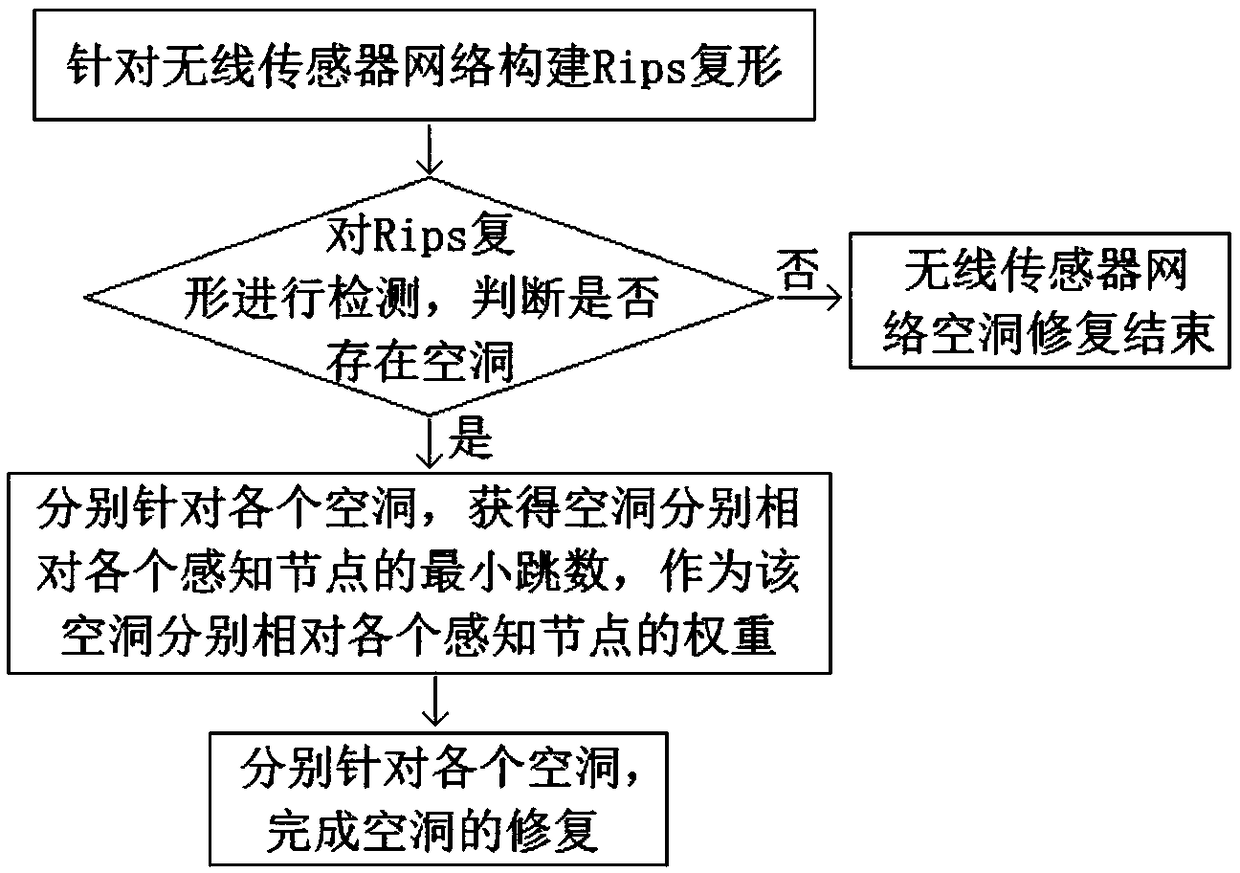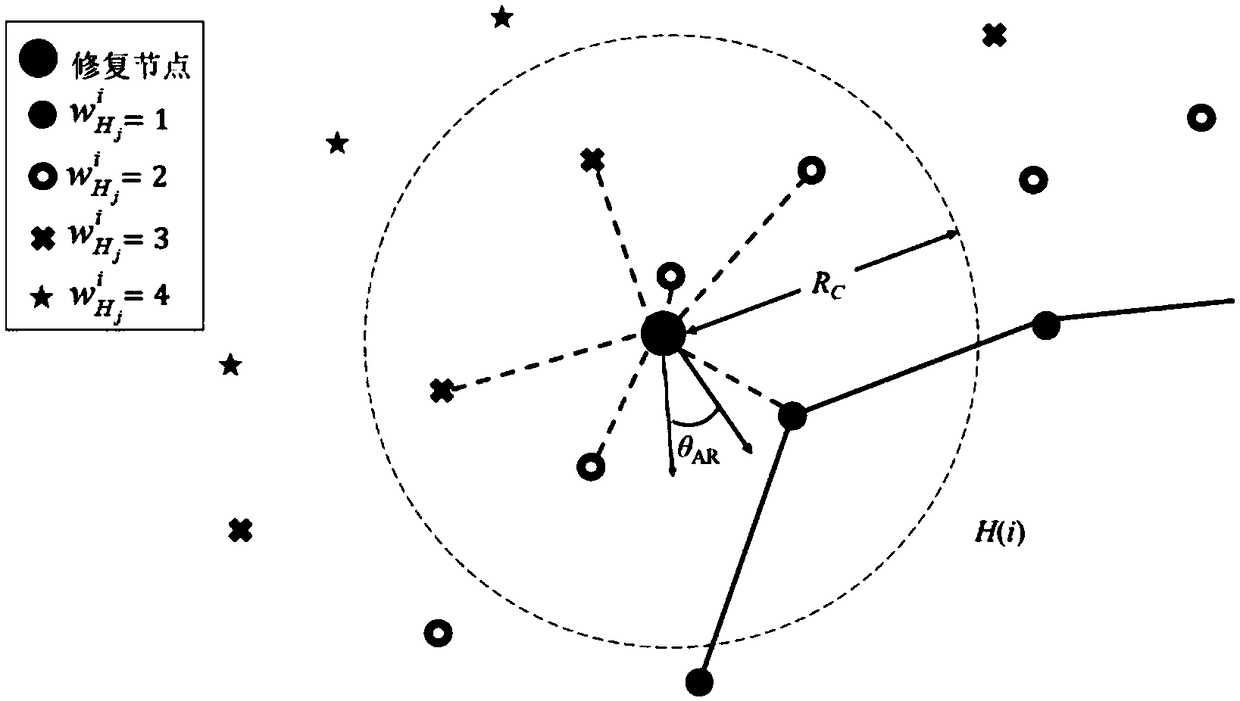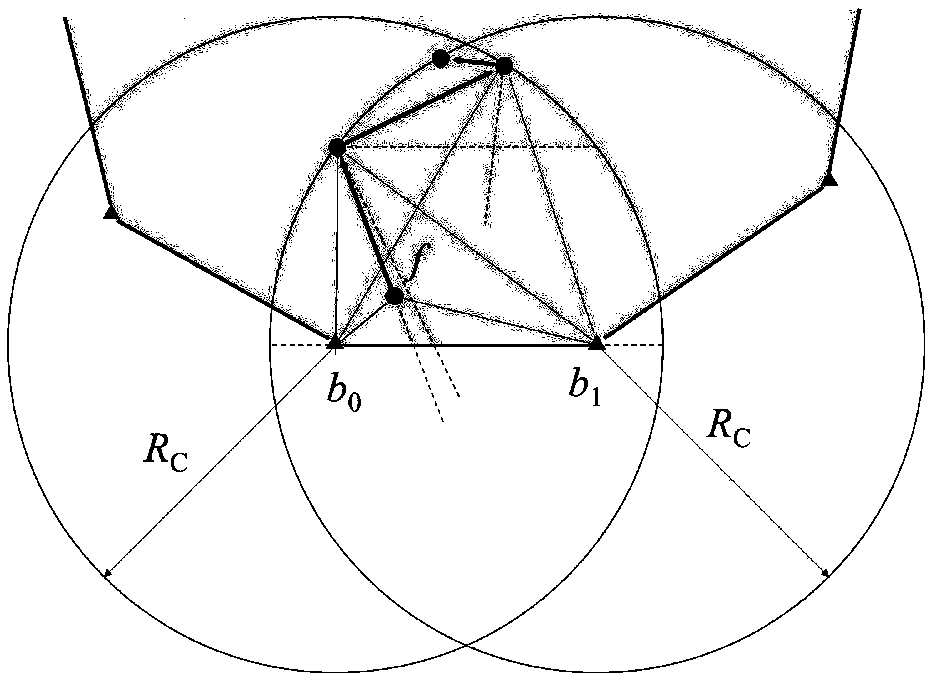Method for repairing network hole of wireless sensor network based on direction of arrival
A wireless sensor and network hole technology, applied in wireless communication, network topology, network planning, etc., can solve problems such as difficulty in obtaining location information, difficult to achieve accuracy, and inability to solve uneven coverage of node density and holes
- Summary
- Abstract
- Description
- Claims
- Application Information
AI Technical Summary
Problems solved by technology
Method used
Image
Examples
Embodiment Construction
[0045] The specific implementation manners of the present invention will be further described in detail below in conjunction with the accompanying drawings.
[0046] Such as figure 1 As shown, the present invention designs a method for repairing holes in a wireless sensor network based on the angle of arrival. The wireless sensor network includes each fixed sensing node and each mobile standby node with mobility, and the communication of each node Radius R C for its perceived radius R S 2 times of; described cavity repairing method comprises the steps:
[0047] Step A. Construct the Rips complex for the wireless sensor network, and use the hole boundary detection algorithm based on the coherence theory to detect the Rips complex to determine whether there is a hole, and if so, obtain the boundaries of each hole in the wireless sensor network, and then enter step B; Otherwise WSN hole repair is over.
[0048] Step B. For each hole, obtain the minimum hop count of the hole r...
PUM
 Login to View More
Login to View More Abstract
Description
Claims
Application Information
 Login to View More
Login to View More - R&D
- Intellectual Property
- Life Sciences
- Materials
- Tech Scout
- Unparalleled Data Quality
- Higher Quality Content
- 60% Fewer Hallucinations
Browse by: Latest US Patents, China's latest patents, Technical Efficacy Thesaurus, Application Domain, Technology Topic, Popular Technical Reports.
© 2025 PatSnap. All rights reserved.Legal|Privacy policy|Modern Slavery Act Transparency Statement|Sitemap|About US| Contact US: help@patsnap.com



